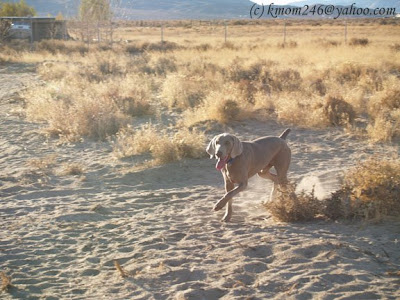 Procrastination means that I have a few "not doing so well" garlic cloves. None of them are actually rotting or moldy, but they certainly are not in their prime. But, can't let anything go to waste, so, like in 2007 (the photo above), I will plant the cloves in a pot. I'll water them well, let them stay outside for a few weeks (so they think Winter has come), and then bring them inside and put in a sunny window sill (so they think Spring has arrived). Keep moist but not soggy and within a few weeks, garlic shoots should rise up. When they get to be 4 or 5 or 6 inches tall, cut a few inches off the top and use like garlic chives. They'll continue to grow for a few months until their storage of food in the clove is used up. Then it is into the compost pile with them. I don't like green onions, so I use these whenever I need green onions.
Procrastination means that I have a few "not doing so well" garlic cloves. None of them are actually rotting or moldy, but they certainly are not in their prime. But, can't let anything go to waste, so, like in 2007 (the photo above), I will plant the cloves in a pot. I'll water them well, let them stay outside for a few weeks (so they think Winter has come), and then bring them inside and put in a sunny window sill (so they think Spring has arrived). Keep moist but not soggy and within a few weeks, garlic shoots should rise up. When they get to be 4 or 5 or 6 inches tall, cut a few inches off the top and use like garlic chives. They'll continue to grow for a few months until their storage of food in the clove is used up. Then it is into the compost pile with them. I don't like green onions, so I use these whenever I need green onions. This is a picture of Jake from October 2006. He's running over what would eventually become the western fence line of my garden. He's buried out in the back, now, within site of the garden.
This is a picture of Jake from October 2006. He's running over what would eventually become the western fence line of my garden. He's buried out in the back, now, within site of the garden. Speaking of burials, this flower grows in the shady areas of Laurelwood Cemetery in Savannah, Ga. Don't know what it is, but it was blooming in July last year when I visited.
Speaking of burials, this flower grows in the shady areas of Laurelwood Cemetery in Savannah, Ga. Don't know what it is, but it was blooming in July last year when I visited.
Here you can see the "chalaza" from one of my eggs. Usually when you break an egg, the chalaza will break near the yolk and recoil and stick to the membrane still in the shell. You can see a good drawing of the parts of an egg at 4-H Virtual Farm (http://www.sites.ext.vt.edu/virtualfarm/poultry/poultry_eggparts.html) I have been trying to take a clear photo of the germinal disc of an egg - it is the very tiny spot that can tell you if an egg is fertile or not. My yolks all seem to land "spot side down", so I haven't captured one of my own, yet. The website mentioned above has a link to a photo of a germinal disc.
Three things I have noticed about my "cage free" chickens are that 1) the yolks are much deeper yellow than store bought eggs - sometimes they are nearly orange, 2) the yolks are strong - you really need to pre-beat them in a cup if you want to break them up - or really stab them with the spatula in the pan (wow, even I can make easy-over eggs with these eggs!), and 3) the shells are much, much harder. This is pretty interesting to me, since they chickies are not "free range" or "organic". They get scientifically, commercially formulated (drug-free) chicken feed, corn-based (drug-free) chicken scratch, oatmeal, scrap veggies, and oyster shell (if they want it). Threw some scratch out in my fallow garden beds this afternoon, so the chickens plowed it up rather nicely while hunting down their goodies. Life is good.
... except, probably, for the 3 chickens that are being culled today. The two Easter Egger roosters (Fancy Pants and The Princess) and EE no. 38 are being relocated to a family in CA who will be, most likely, eating them. They are in a dog crate awaiting transportation (yes, they have access to water). The whole rest of the flock is already much happier with just the two Maran roos.
The two EE roosters were getting meaner and meaner, both to me and the hens. They would corner a hen and be pretty rough on her. The hens would stress out and scatter whenever the two EEs came near... but the two Maran roosters are gentle and the hens will actually go up to them and "present" themselves. I guess we'll be having Maran and Maran crossbreed babies in the early summer! (The Marans, as a species, seem to be more interested in eating than fighting or being mean... gentleness is a good trait to breed into a flock.)
Brown EE no. 38 started pulling feathers and picking on all the hens a few weeks ago. We tried to cure her of her bad habbits, but when she started picking so badly that she was drawing blood and nearly killed one of her flock-mates, we knew she had to go. Don't want her teaching the others how to do such things... the SLW that got all beat up is in "hospital confinement" in a dog crate in the hen house. That way she can rest up without the roosters or others bothering her, but talk to the other chickens and still be part of the flock. Don't know if she will make it or not. She is bare chicken skin on several spots on her back and looks pretty pecked at and bruised.

4 comments:
Hello, just found your blog recently, looks like good stuff here! This has absolutely nuttin' to do with this message, I just nominated you to receive the Lemonade Stand Award, you can check it out here...
http://wretha.blogspot.com/2009/01/lemonade-stand-award.html
or
http://tinyurl.com/936p9k
Wretha
Thanks so much! When we first contemplated moving to the rural desert, we didn't know anyone who had done it and everyone thought we were crazy! So, maybe we "are" crazy, but it sure is nice to know we aren't the only ones! Take care! Many blessings. - Karla
Yeah, I fully believe that you have to be a little nuts to want to live like this, but that's ok, I like it!
Wretha
The Omnivore's Dilemma by Michael Pollan is just a great book overall, but I remember it has a large section explaining why free range chickens have stronger, deeper in color yolks than normal store bought. It's something about them eating plants and absorbing a nutrient from the plant matter rather than being fed feed that's been stripped of so much stuff. I know you mentioned yours are not free range, but you must be doing something similar in their diet.
He also talks about this farm and how their yolks were also very very strong. When they were trying to convince local restaurants that their eggs were of superior quality, they would crack the egg, take the yolk, and toss it back and forth between their hands as they made their pitch. Sounds like your eggs have similar strength!
Post a Comment